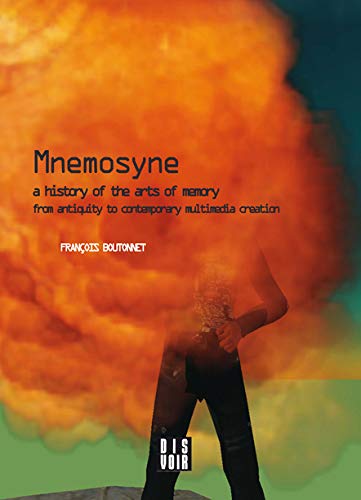en savoir plus

Carte fidélité
Permet à tous ses détenteurs d'obtenir 5% de réduction sur tous les livres lors du retrait en magasin (réduction non cumulable avec les réductions de type étudiant).
Offre également un certain nombre d'avantages auprès de nos partenaires.
Wishlist
Avec les favoris, retrouvez dans un espace les sélections effectuées au fur et à mesure de vos navigations dans le site.
Constituez pour votre usage personnel vos listes de livres en prévisions d'achats futurs et votre sélection d'articles, dossiers, événements, vidéos ou podcasts préférés ou à découvrir plus tard...
Il suffit simplement de cliquer sur "Ajout Favori" sur chaque page qui vous intéresse pour les retrouver ensuite dans votre espace personnel.
Requiert un compte Mollat
Mes Alertes
Requiert un compte Mollat
Mnemosyne : a history of the arts of memory : from antiquity to contemporary multimedia creation
Auteur : François Boutonnet
en savoir plus
Résumé
Cet essai présente une histoire des arts de la mémoire, initiés en Grèce antique, transmis de génération en génération, jusqu'à la virtualité des dispositifs numériques dans l'art contemporain. ©Electre 2025
Lire la Quatrième de couverture
Réduire la Quatrième de couverture
The « Arts of Memory » are a marker of the way people think in a given time period. They act as a black box of the representations of the world. 2700 years ago, the Ancient Greeks invented the Arts of Memory, personified as Mnemosyne. More than merely a mnemonic device useful to orators, they invented a technique consisting in visually representing the world, which has since nurtured figurative arts and human knowledge.
Focusing on the theme of Mnemosyne, this essay thus reflects on the history of visual thought revealed by the Arts of Memory, from Antiquity, through Giordano Bruno, Leibniz and Benjamin to Aby Warburg and digital landscapes. Today, with digital culture a major objective of network - linking human beings, and through with its interactive practices provide new possibilities for reinventing Bruno's expanding universe. This enables us to access a wide range of information and knowledge and their interactions help us to develop collective intelligence. This work also shows how humans and their computer memories are producing new forms o1 knowledge using digital media combined with this ancient Art. We see how a new type of visual thinking is emerging that creates new forms of knowledge and representations of the real.
Today, because of the new possibilities afforded by audiovisual applications and multimedia, these arts of memory have become fully meaningful as a way of apprehending the emergence of a digital thought process. The status of images has followed the same paradigm shift, so that we now consider the image not as the visible but as the visual, not as a world of shapes, but as a concretion of time, obligating, according to Georges Didi-Huberman, art history to turn back into an art of history, an art of memory.
Fiche Technique
Paru le : 01/10/2016
Thématique : Généralités Histoire de l’Art Ecrits sur l’Art
Auteur(s) : Auteur : François Boutonnet
Éditeur(s) :
Dis voir
Collection(s) : Visual arts
Contributeur(s) : Traducteur : Charles La Via - Traducteur : Adam Clark
Série(s) : Non précisé.
ISBN : 978-2-914563-83-3
EAN13 : 9782914563833
Reliure : Broché
Pages : 127
Hauteur: 28.0 cm / Largeur 22.0 cm
Poids: 296 g
